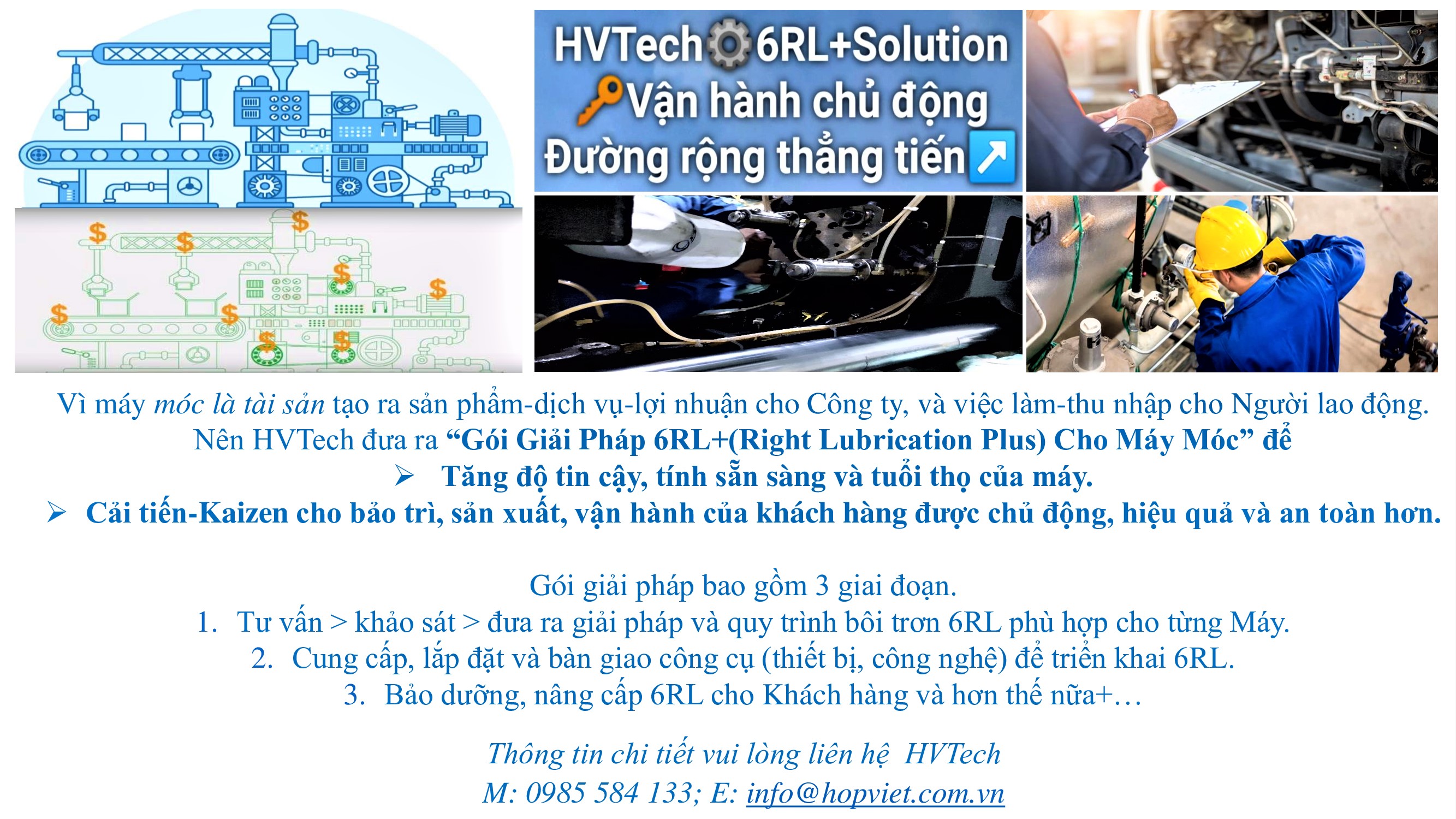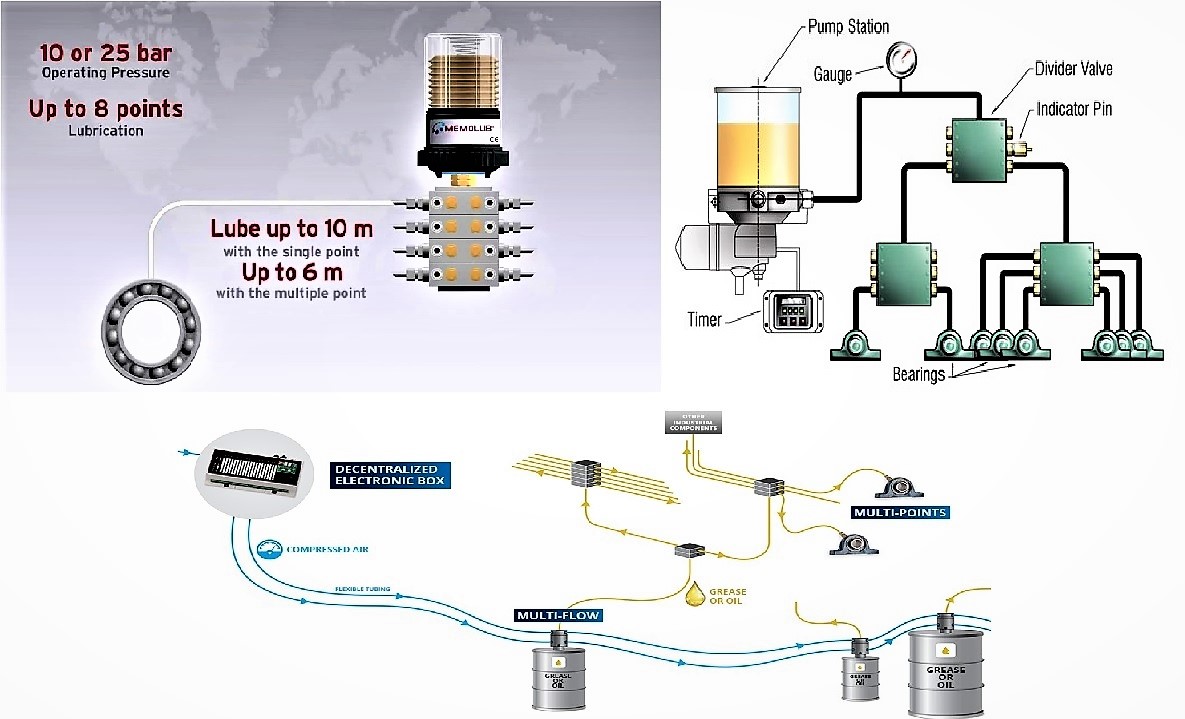Machine-The asset which creating value of products, services, profit, jobs, and income for us.
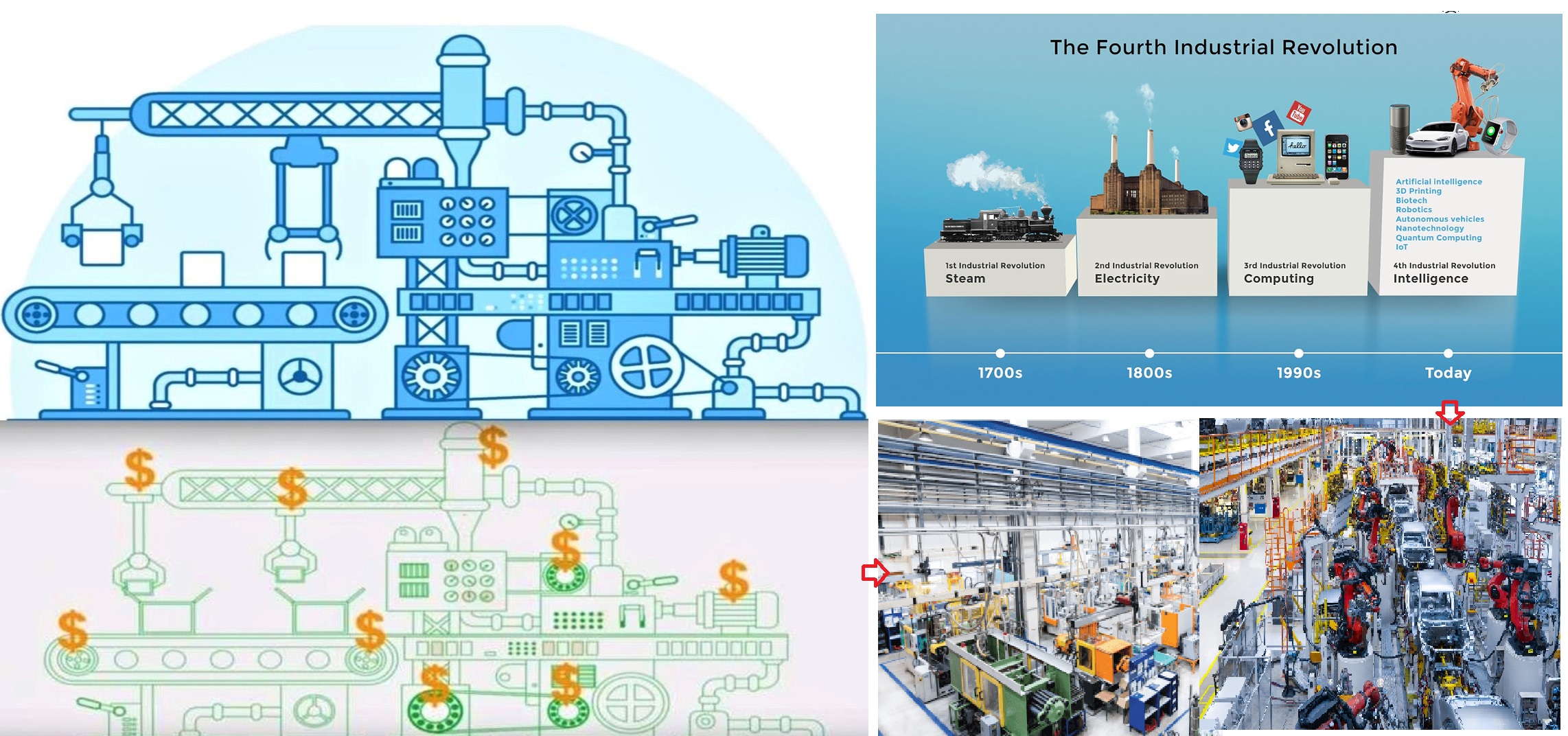
From 1760-The industrial revolution 1.0: Machine were invented and used rarely, until now 2023-The industrial revolution 4.0: Machines are used in many applications, but we still using manual lubrication way.
For many industrial facilities, manual lubrication has been “good enough” for a century or more.
But it isn’t very efficient and it doesn’t consistently protect your expensive production machinery. So why still settle for it? Especially when it has below disadvantages.
-
Q: WHAT ARE THE MAIN DISADVANTAGES OF MANUAL LUBRICATION?
Q: THE 3 DISADVANTAGES OF MANUAL LUBRICATION
- Improper lubrication and exposure to contaminant-moisture: This is the biggest problem with manual lubrication. Under‑lubrication can cause a variety of problems, including:
- Increased friction between metal surfaces,
- Increased heat, which is caused by friction,
- Premature bearing and equipment failure, which can be caused by both, and
- Exposure to contaminants and moisture.
Over-lubrication can cause just as many problems, including:
- Increased heat due to increased internal friction,
- Premature grease degradation due to excessive heat, and
- Internal stress on bearings as the excess lubricant pushes the rolling elements against the outer bearing race, making the bearing work harder.
Industrial bearings can be placed in some really nasty environments. Even grease nipples that are properly capped between re-lubrication events are susceptible to contaminants from a dirty work area or from dirty hands or tools.
If care is not taken to ensure this nipple is clean prior to applying lubricant, contaminants such as dirt, sand, metal shavings, wood dust, and gravel can make their way into the lubrication stream. If this happens, not only is the lubricant effectiveness compromised, but the bearing itself is also in peril. This is a risk every time the bearing is manually lubricated. So, the more frequent the lubrication, the greater its vulnerability to contamination.
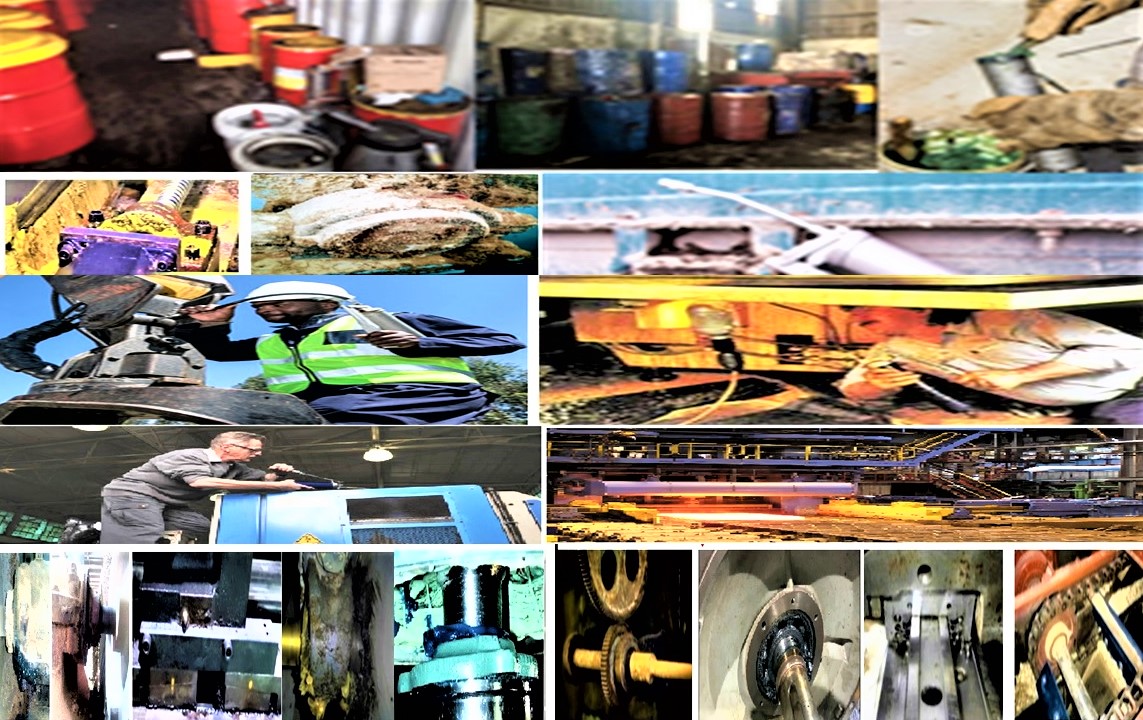
2. Time-cost consuming implementation and relating labor safety issues: From a labor standpoint, manual lubrication is quite costly. It involves a lot of preparation work, including gathering equipment and tools, locking out machinery and removing machinery covers and panels to access the lubrication points.
Today’s machines, especially those with high-speed bearings, require more frequent lubrication to keep up with increased productivity demands. That means the tedious task of re-lubrication must be repeated more often, adding to the equipment’s maintenance cost, especially for the difficult access or dangerous lubrication points such as high level, high temperature, high noise-dust level, chemical exposure, explosions….
Lubricant purchasing and logistics cost is another point: To manually lubricate machinery throughout a facility, the maintenance technician must load up a lubrication cart with grease guns and lubricants and then push it to each machine to apply the lubricant. Over 80% manual lubrication are over lubrication which mean wasting a lot of lubricant, hence cost more lubricant purchasing and storage fee.
3. Uncontrollable and uninteresting work which is easily got human errors.
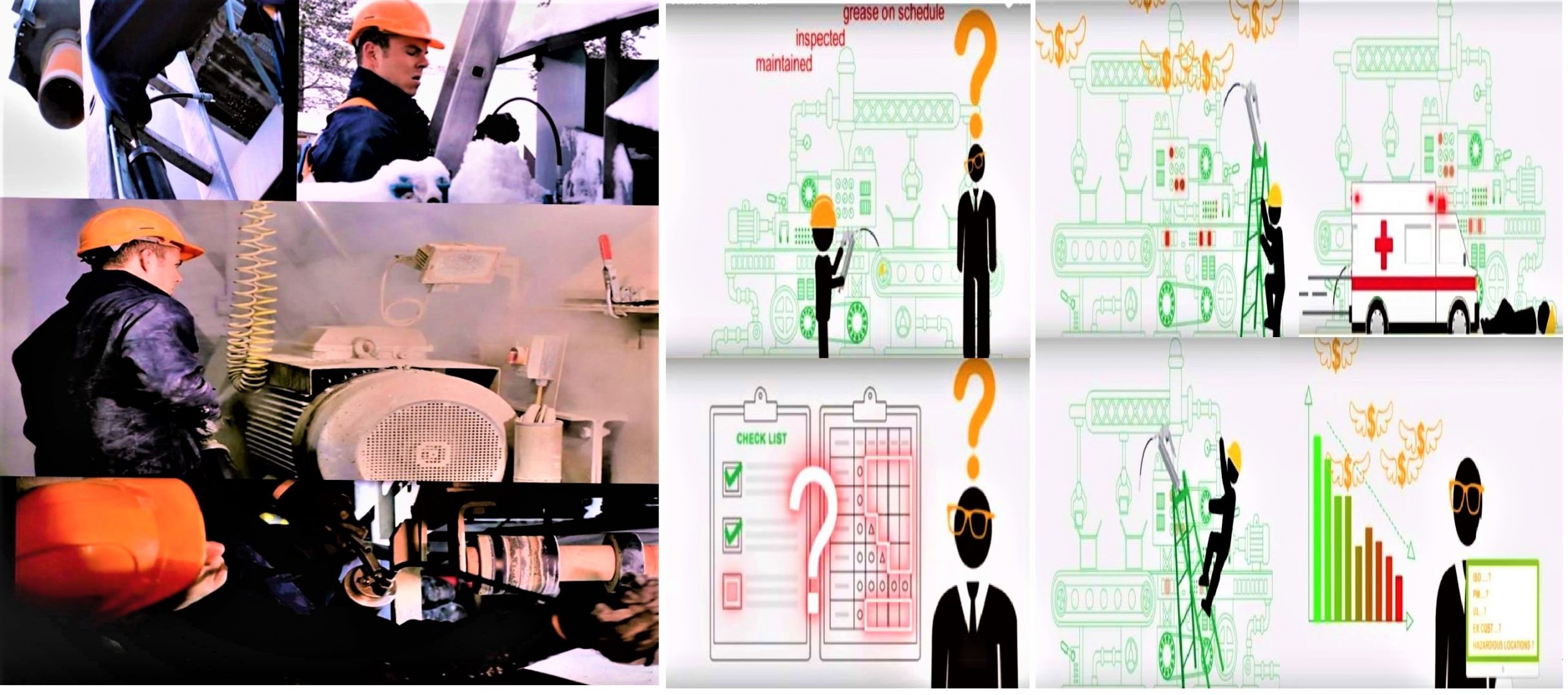
2. Q: WHAT IS THE AUTOMATIC LUBRICATION SYSTEMS?
A: AN AUTOMATIC LUBRICATION SYSTEM (ALS) is a system that delivers controlled amounts of lubricant to multiple locations on a machine while the machine is operating. Even though these systems are usually fully automated, a system that requires a manual pump or button activation is still identified as a centralized lubrication system.
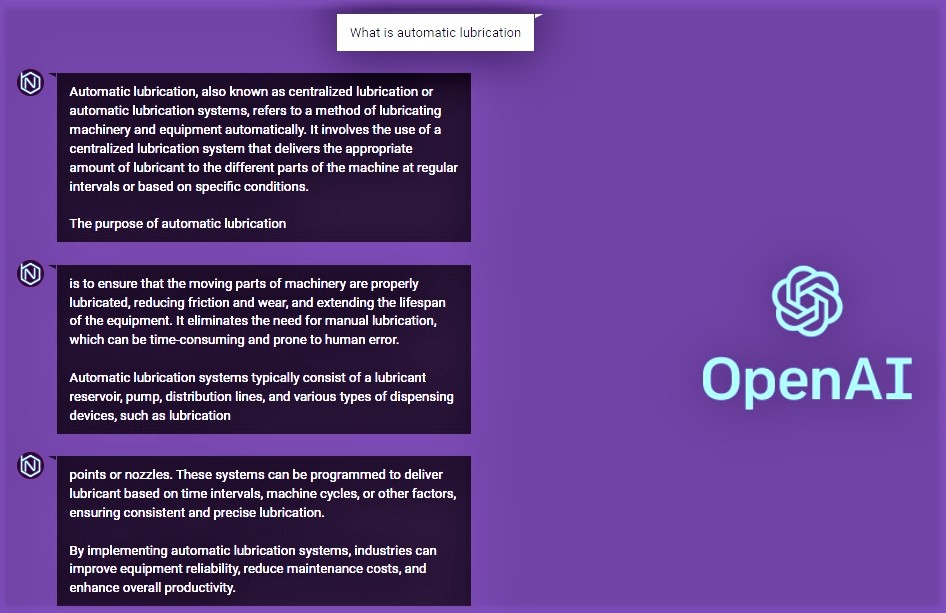

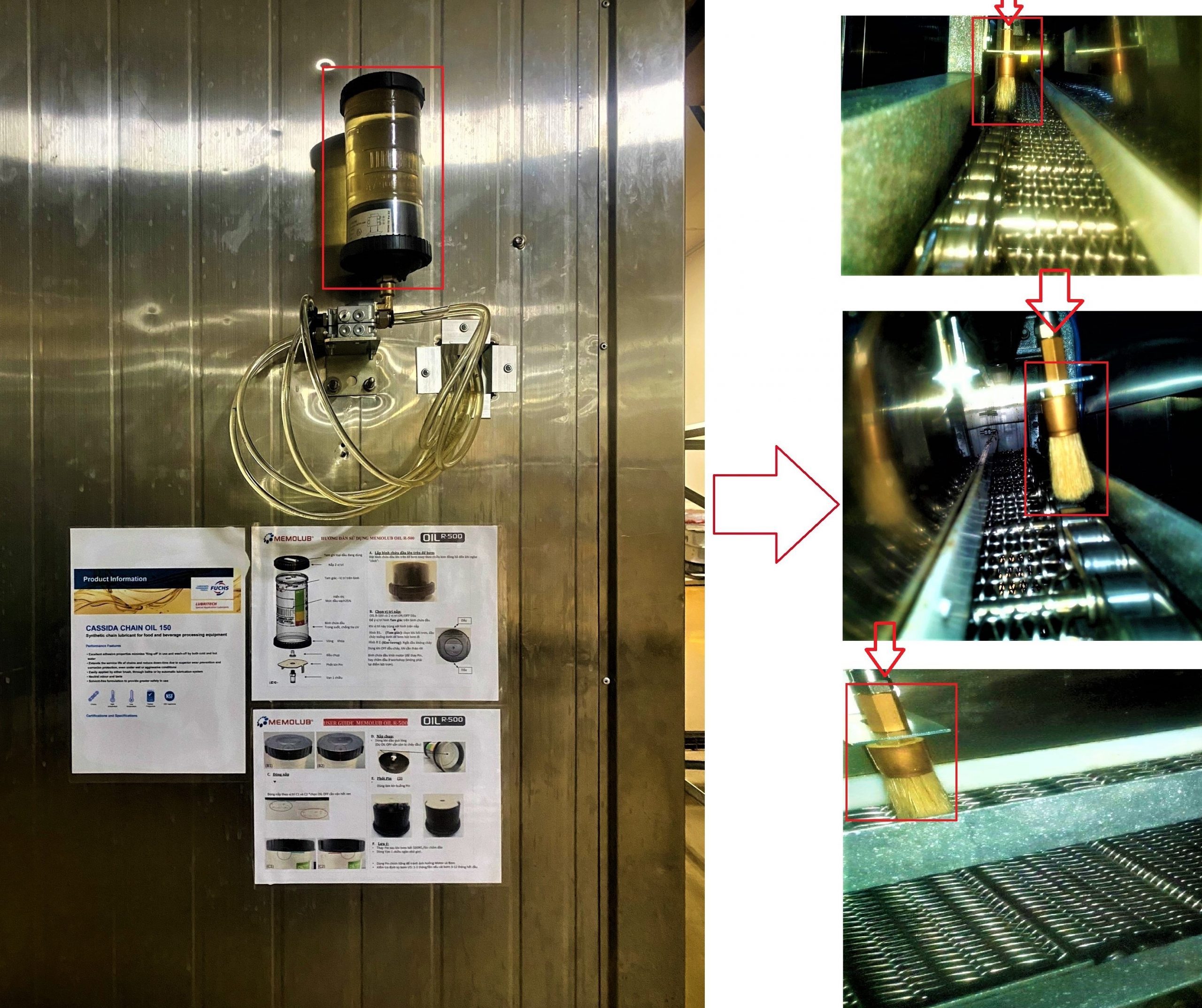
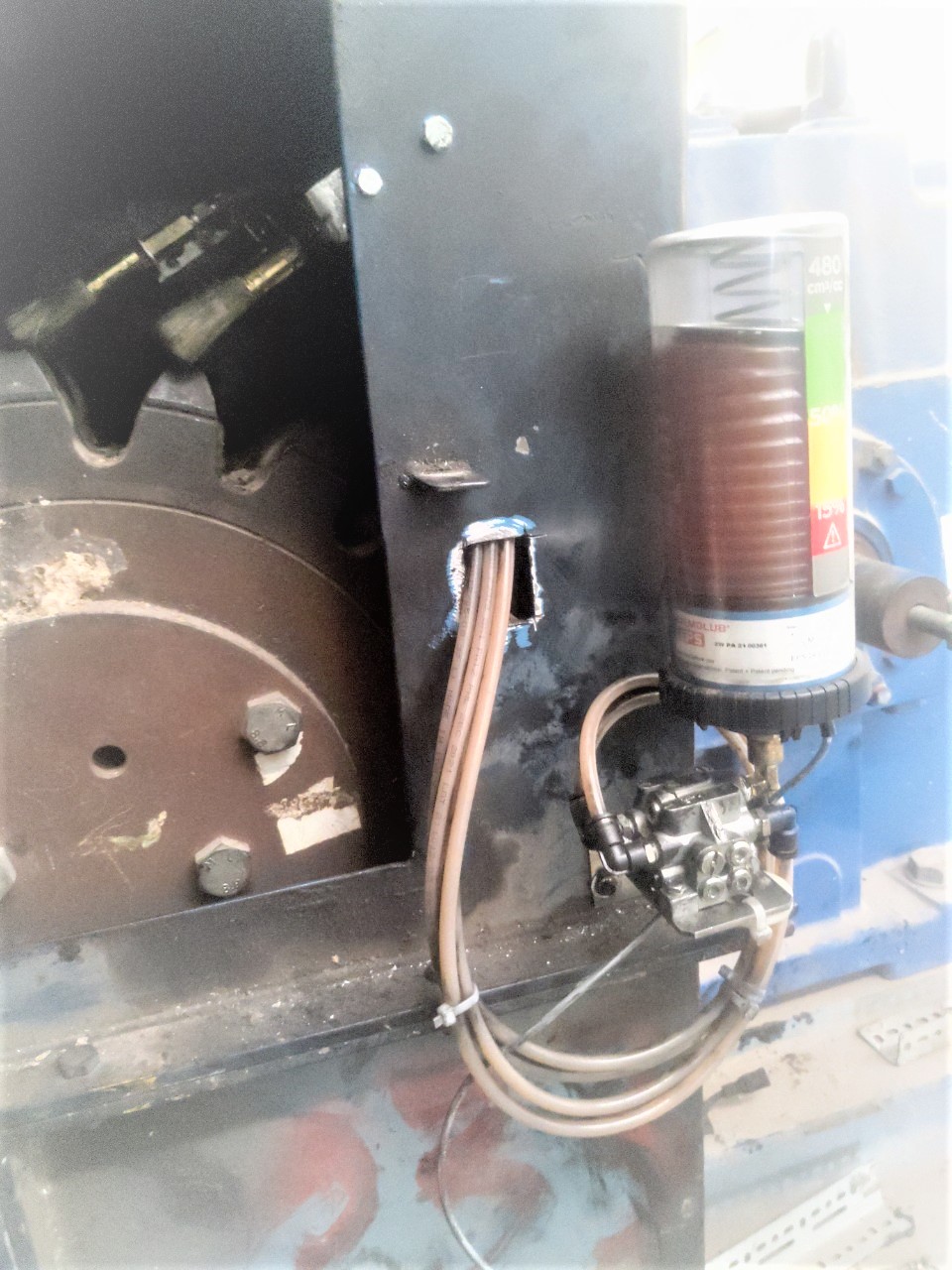
The Main Features Of ALS Is
- Accuracy: just enough quantity of lubricant according to calculations, working conditions and settings
- Continuously: lubrication every day or even every hour
- Closed-clean: not contaminated and impurities for lubricants and lubrication points
Automatic lubrication system was invented and designed to
- Minimize labor accidents and protect people from dangerous lubrication locations such as overhead, high temperatures, dirt, high noise, toxic chemicals, damp, slippery, flammable, explosive area, moving parts,…
- Control the Lubrication and Protect the Machine better, as well as Improve the KPI-Efficiency for Maintenance and Production by ensuring machines are lubricated while the manufacturing process is running normally without stopping machine like manual lubrication, and minimize Machine downtime due to lubrication failure.
- Minimize the risk of pollution of the working and manufacturing environment and reduce Product quality negatively affected due to excessive lubrication when do manual lubrication.
3. Q: WHAT TYPES OF AUTOMATIC LUBRICATION SYSTEMS AND ITS TECHNOLOGY?
A: CLASSIFICATION BY
I. THE LUBRICANT
Automatic Oil Pump System: Lubricate the transmission gear such as Chains, Gears, …
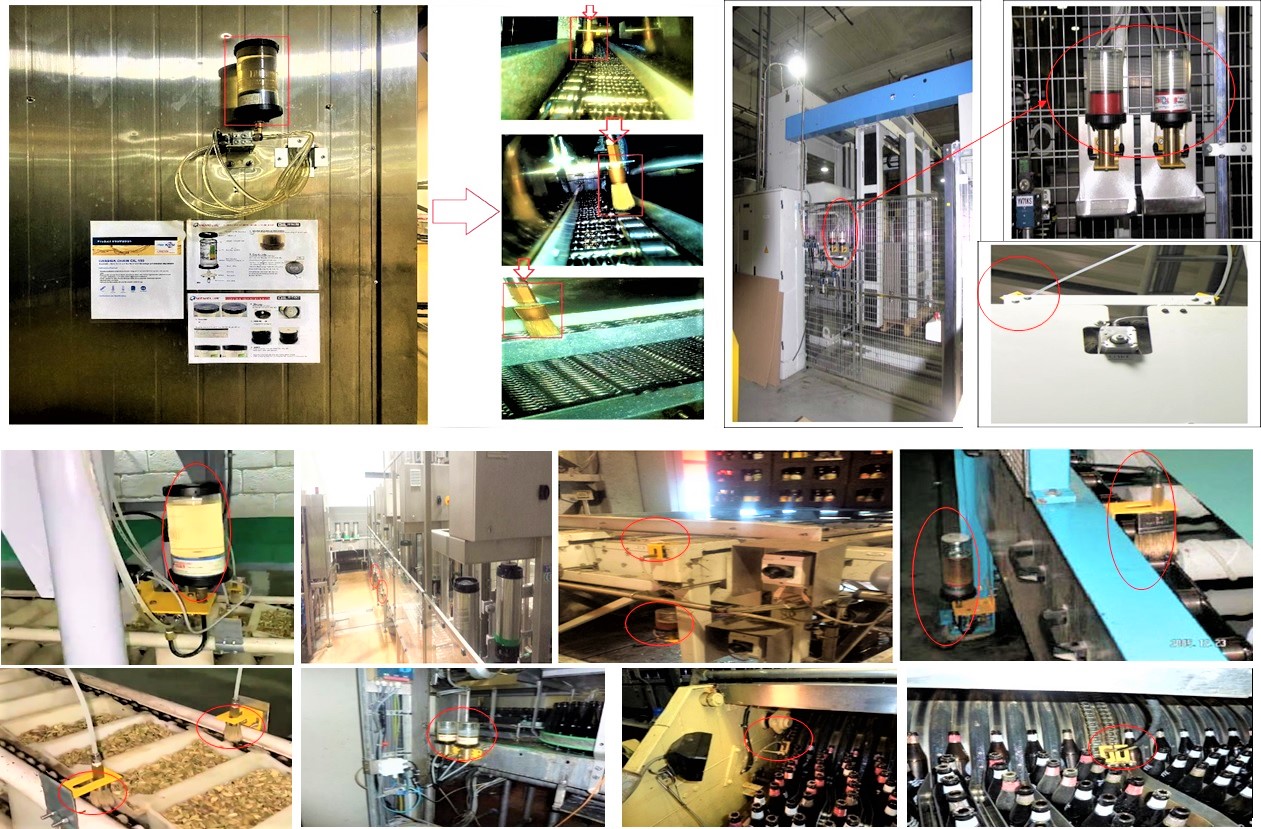
- Automatic grease system: lubrication for equipment such as Bearings, Slide Linear Bearings, Screws dirve bearing, Cables,…
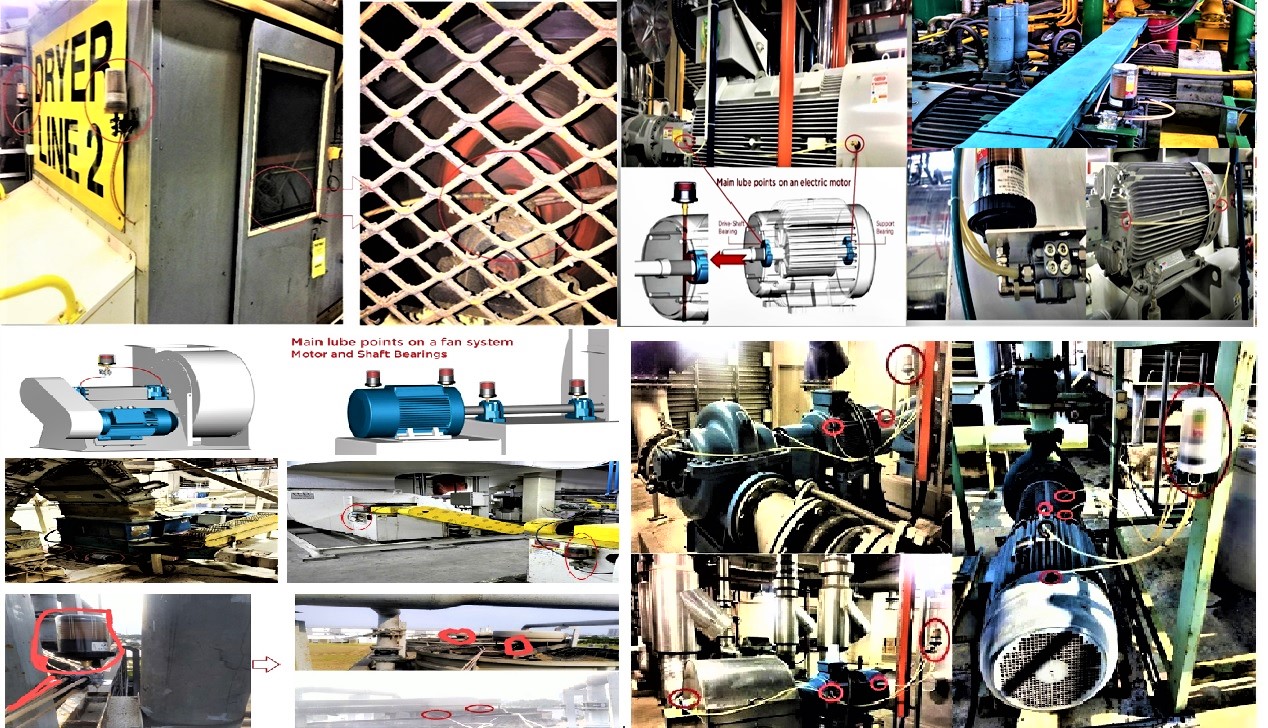
II. THE QUANTITY OF LUBRICATION POINTS
- Single-point lubrication system: Pumps with low pressure of 10 Bar or less
3 Generation of Single point lubrication

- Multi-point lubrication system (locally group multi-points): Using mechatronic technology, pumps with high pressure of 15 Bar or more (internal battery or external power supply) combined with the agressive distributor multi-points.
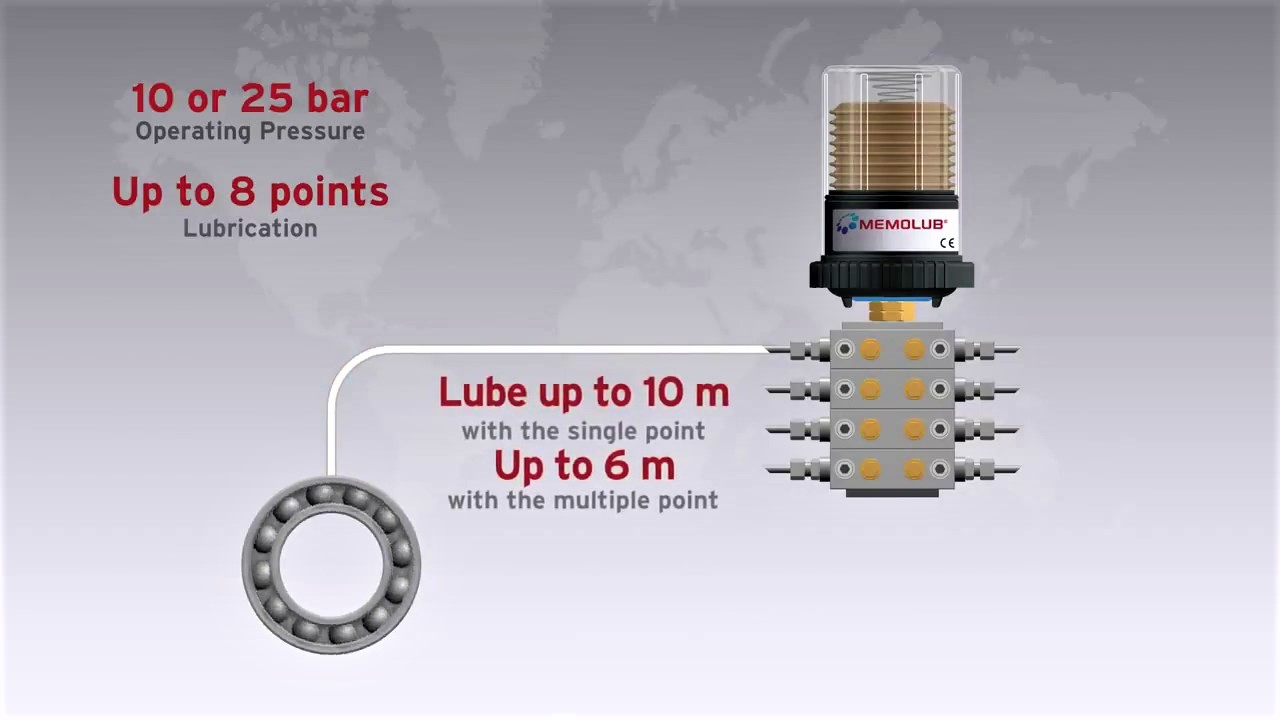
- Centralized multi-point lubrication system: Using mechatronic technology, high pressure pump, usually from 50 Bar or more (external power supply or compressed air)

- Decentralisation multi-points lubrication system: Mechatronics technology, low pressure pump (6 Bar) wthi special design then can pumps the lubricant far away –max 20m and lubricate many points (compressed air source).
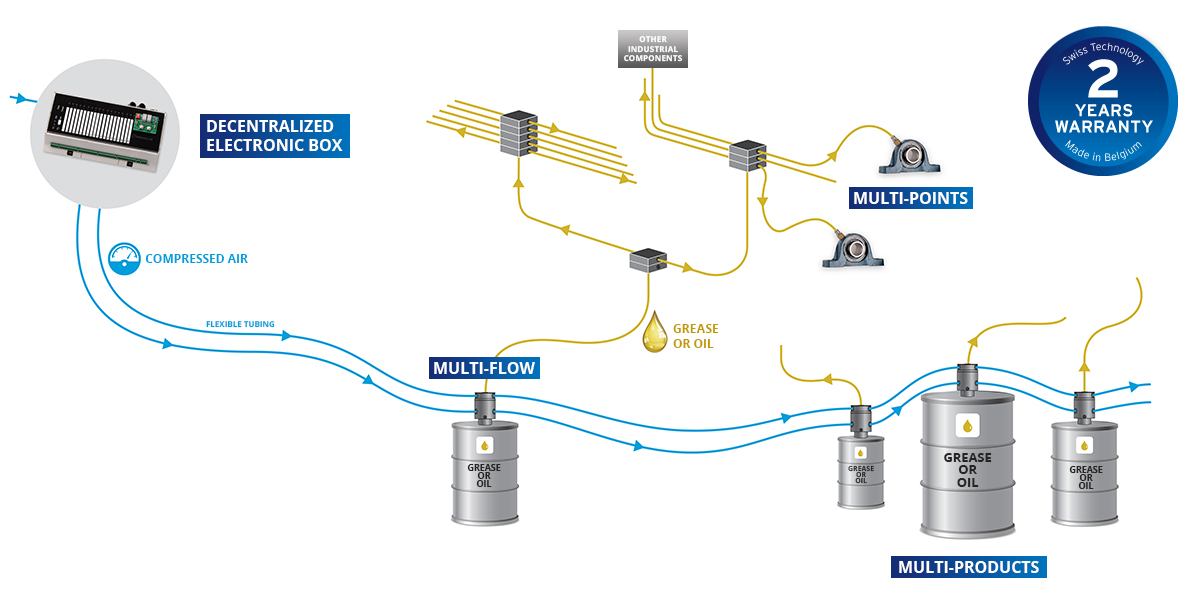 And other types of automatic lubrication systems such as
And other types of automatic lubrication systems such as
- Single Line Parallel systems
- Dual Line Parallel systems
- Single Point Automatics
- Single Line Progressive systems (or Series Progressive)
- Single Line Resistance
- Oil Mist and Air-Oil systems
- Oil re-circulating
- Chain lube systems
4. Q: WHAT IS THE STRUCTURE AND OPERATION PRINCIPLES OF AN ADVANCED AUTOMATIC LUBRICATION SYSTEM (ELECTRO-MECHANICAL TECHNOLOGY)?
A: A TYPICAL SYSTEM CONSISTS OF controller/timer, pump w/reservoir, supply line, metering valves, and feed lines. Regardless of the manufacturer or type of system, all automatic lubrication systems share these 5 main components:
- Controller/Timer – activates the system to distribute lubrication can be linked to a POS system.
- Pump with Reservoir – stores and provides the lubricant to the system
- Supply Line – line that connects the pump to the metering valves or injectors. The lubricant is pumped through this.
- Metering Valves/Injectors– component that measures/dispenses the lubricant to the application points.
- Feed lines – line that connects the metering valves or injectors to the application points. The lubricant is pumped through this.
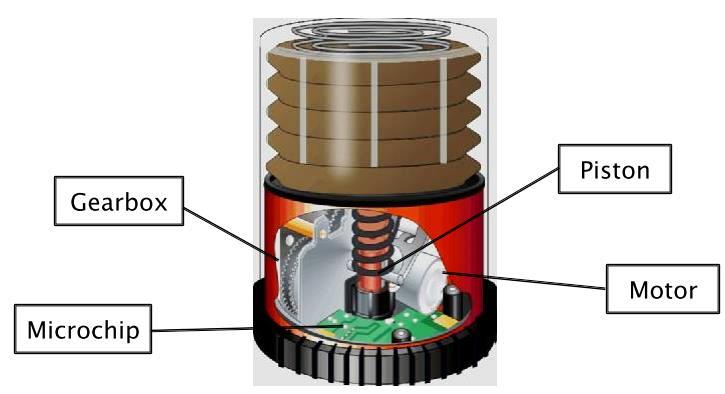
Structure And Operation Principles Of An Advanced Automatic Lubrication System (Electro-Mechanical Technology)
Structure and operation principle of the aggressive Distributor (control the pressure and flow for the output so make sure to divide the pressure and flow evenly all out-put ports whether the lubrication point is near or far from the pump)
5. Q: WHAT ARE THE ADVANTAGES AND DISADVANTAGES OF THE AUTOMATIC LUBRICATION VERSIONS?
A: If the Traditional spring and Gas automatic lubrication technology has the advantage of being cheaper than the Advanced mechatronic automatic lubrication technology because of its simple structure, But there are many disadvantages such as: Lubrication is only 1 point and must be installed in place Incorrect flow rate, incorrect lubrication (because of the spring compression force and the ambient temperature) Oil separated from the grease so it is not guaranteed to maintain the properties of the grease and the oil leaks on the pipe or fitting. High cost to use because when all the grease is used, the pump must be replaced (cannot be reused) You can refer to the following Comparison Tables for more details

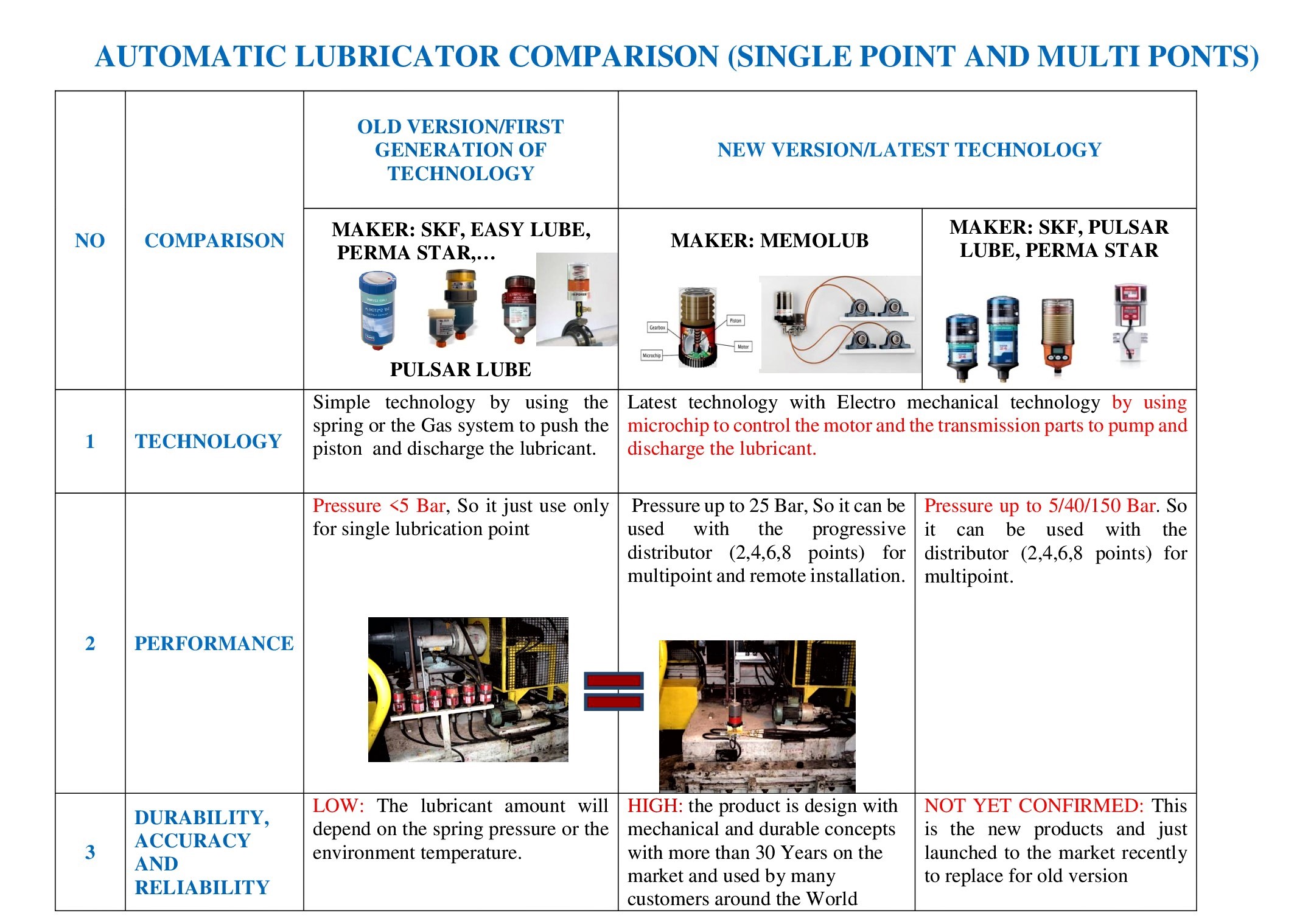
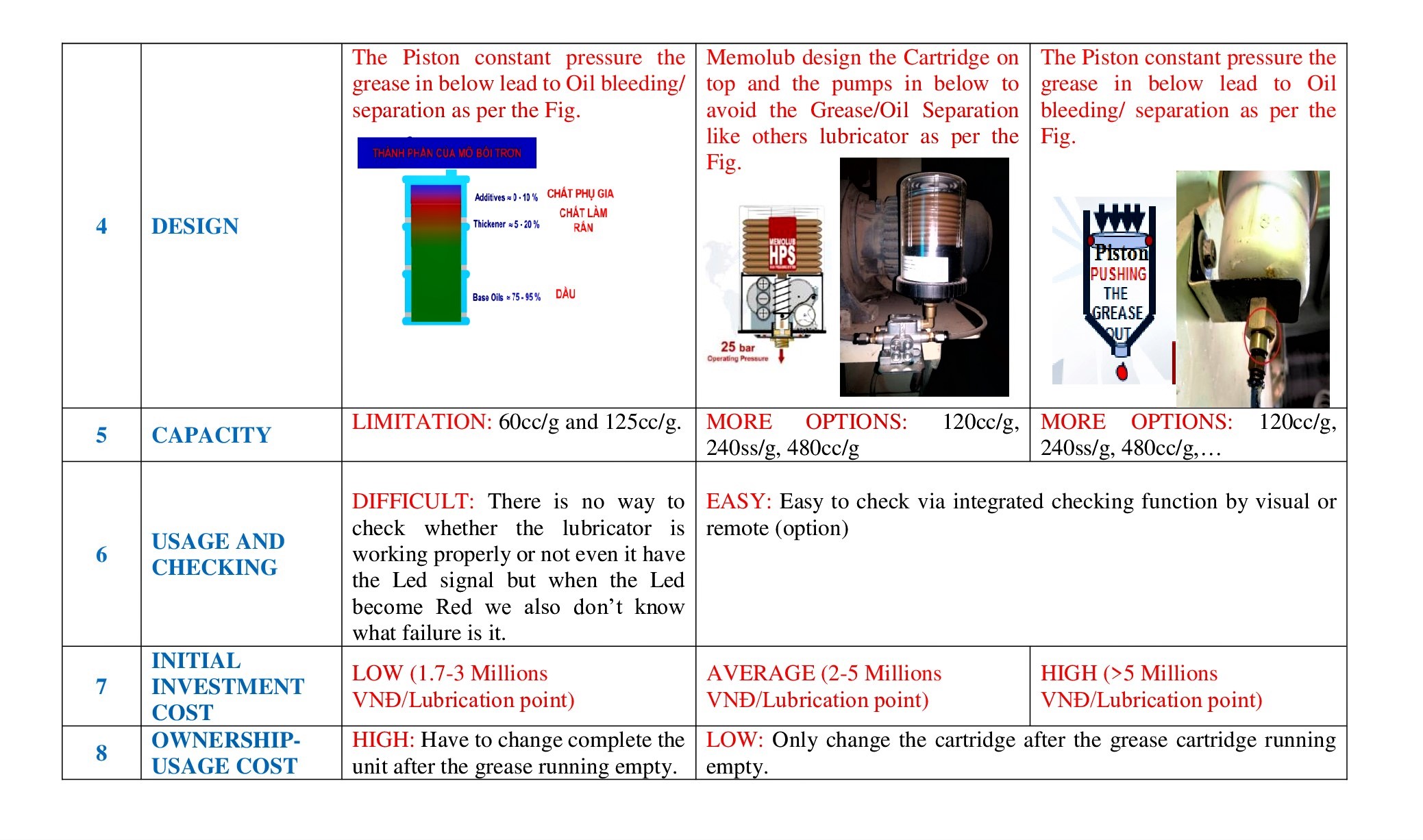
6. Q: WHY THE AUTOMATIC LUBRICATION HAS BEEN BECOME MORE AND MORE POPULAR?
A: Automatic lubrication systems can be more sustainable than manual practices and can help customers save money through more efficient use of materials and longer-lasting equipment regarding:
1. ECONOMY AND ENVIRONMENT FRIENDLY: A properly installed automatic lubrication system can reduce (43-80%) cause of machine’s mechanical transmission parts (bearings, chains, gears,…) which improve machine uptime, and reduce 50% grease consumption amount compare to manual lubrication and reducing lubricant-chemical agents disposal to the environment and water sources.
2. SAFETY is another key consideration driving the automatic lubrication system trend. Especially in challenging environments like ports, mines and quarries, power-energy plants who are turning to automatic lubrication to reduce risk and prevent accidents.
3. LEAN: They help lessen labor needs and optimal labor resources.
Because of more sustainable development manufacturing economy, so applying automatic lubrication is a trend.
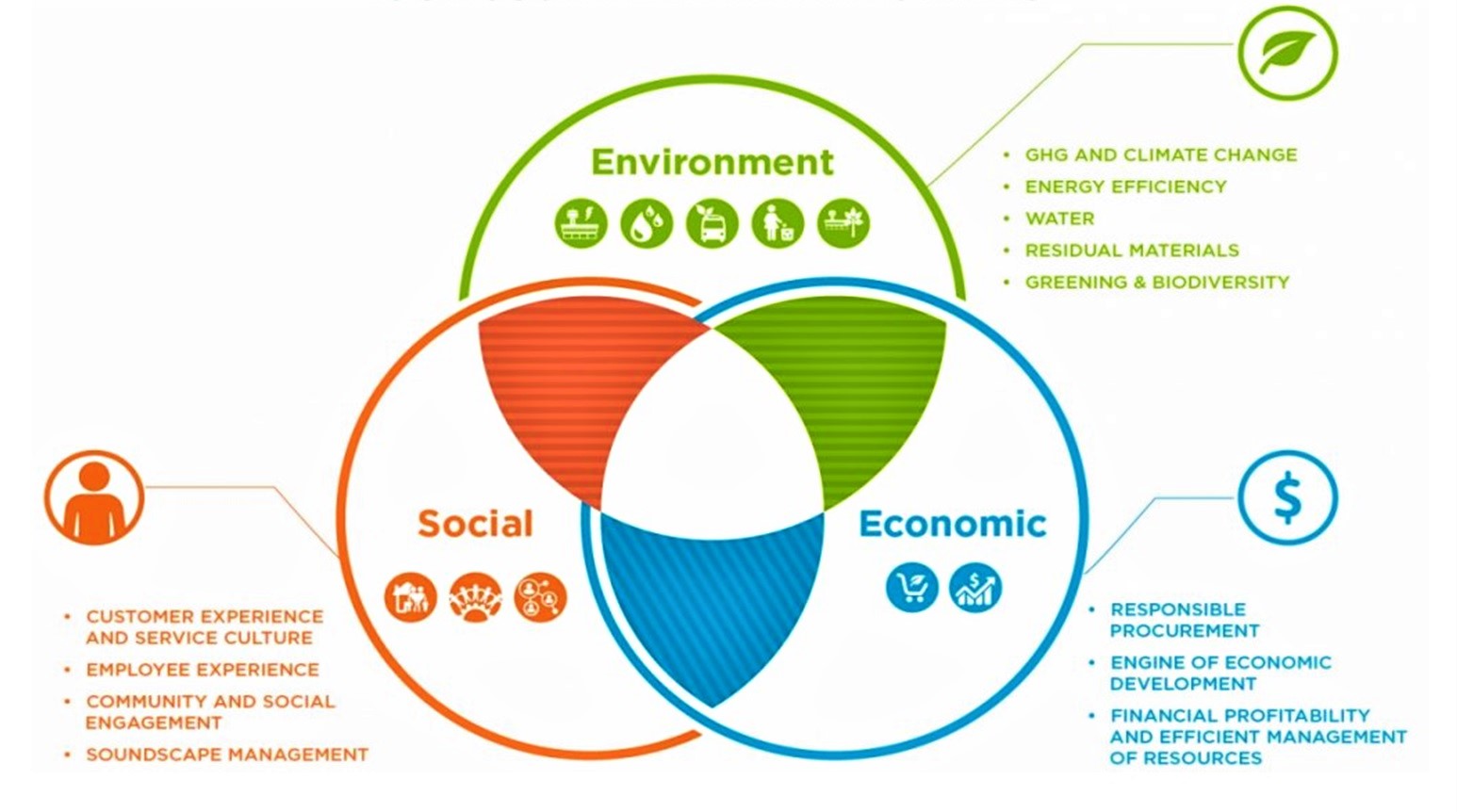
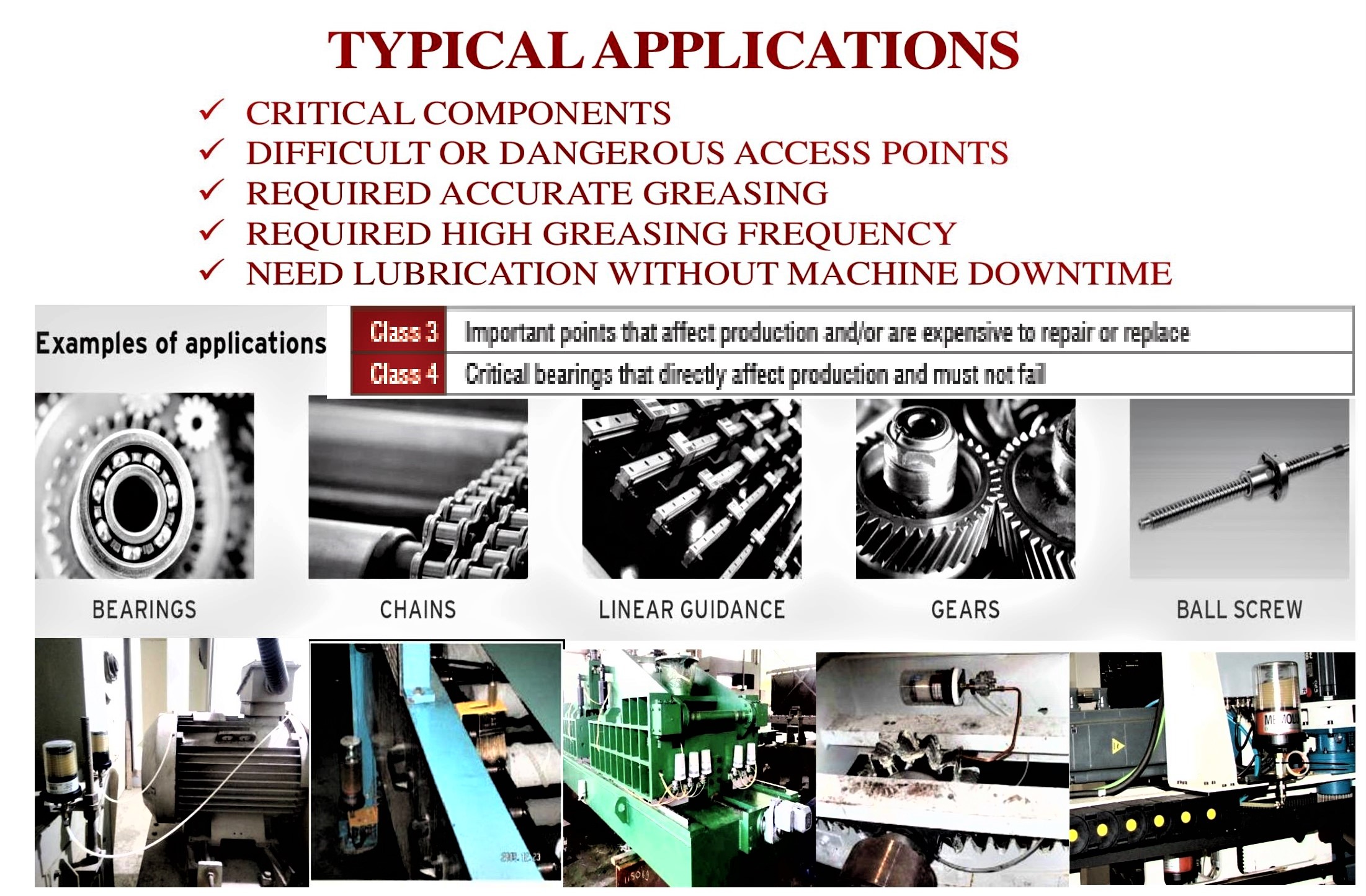
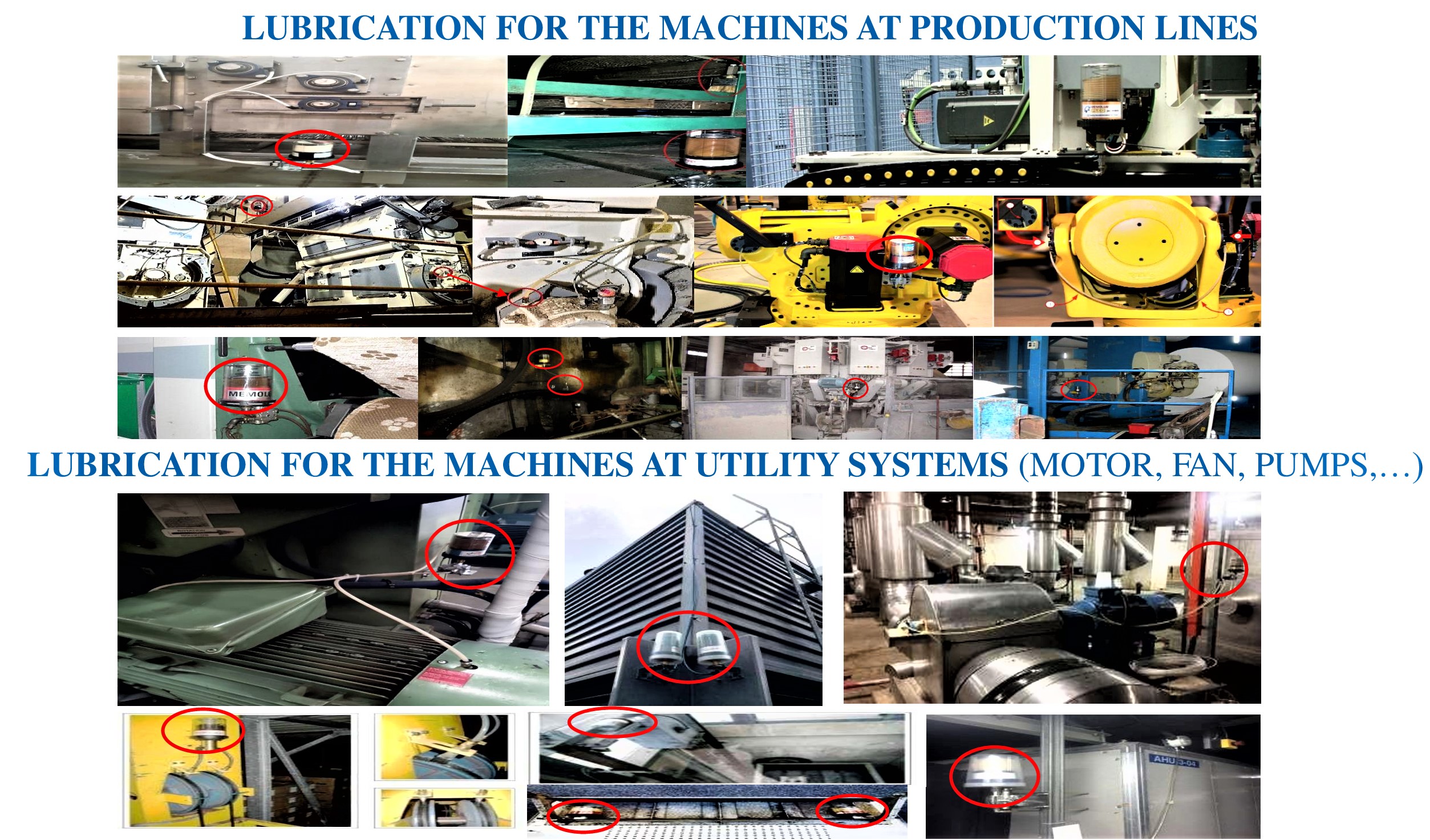
Discover more detailed at https://hopviet.com.vn/2020/02/vi-sao-chuyen-doi-tu-boi-tron-may-moc-thu-cong-sang-tu-dong-dang-la-xu-huong/
Automatic lubrication system is the right choice for Factories, Commercial Buildings, Airports, Seaports… which has machineries and equipment need proper lubrication for efficient and smooth operation.
7. Q: HOW TO SELECT A SUITABLE AUTOMATIC LUBRICATION SYSTEM?
A: Deciding how to lubricate equipment in a process plant is not an easy task?
You can create your own machine classification, which could be similar to the following:  For each class, define which lubrication systems are acceptable and how performance is verified. Classes 3 and 4 are the most interesting and are the most important also the most suitable for applying automatic lubrication. Because If the lubrication system does not work properly for these classes, sooner or later you will experience costly problems.
For each class, define which lubrication systems are acceptable and how performance is verified. Classes 3 and 4 are the most interesting and are the most important also the most suitable for applying automatic lubrication. Because If the lubrication system does not work properly for these classes, sooner or later you will experience costly problems.
- For class 3, only reliable lubrication systems with good control functions should be used. Note that most systems only monitor the pressure in the main distribution lines or that the piston has moved in the dispenser. None of the traditional systems can indicate whether the lubrication pipe between the dispenser and the lube point is broken.
- For class 4, ensure that the amount of lubricant fed into the point is measured and compared with the set value, or that vibration measurements are collected on a regular basis and studied, with appropriate action taken when necessary. In addition, we must also consider the applicability and suitability of existing lubrication systems on the market.
For example: If the factory has many lubrication points for many machines of level 3 and 4 located in different positions, in different production lines and production areas with different working and lubrication conditions, if we choose
? Single-point automatic lubricator: is not suitable because it will have to use many single points lubricator with lot of money, it is also expensive for ownership cost.
? Centralized or Decentralization automatic lubrication systems: is not suitable because it is not possible to wiring, connect for many different positions. There are many potential risks when one lubrication point on the system is damaged and affecting to other machines. It is also expensive for ownership cost when this system needs to do maintenance often.
?Multi-Points automatic lubrication systems (local group points lubrication system): is suitable because the independent of installation for each group of lubrication points of each machine. Investment costs and the ownership cost are also reasonable because the product can be reusable and only change the grease cartridge when it is empty, inspection and control the lubrication are also very easy.
In addition to the above technical and application factors, we also need to pay attention to the factors.
- Quality, durability, stability and reliability of the automatic lubricator.
- Prestige and experience of brands name and local supplier.
- Availability of products and spare parts on the market.
- Technical services and support.
Finally, do not overlook the training of your team members. Maintenance personnel must be familiar with all types of systems in use. Lubrication systems can fail during using (mostly is using failure) as it is also an Equipment and it need troubleshooting. Therefore, it is wise not to mix many different system types and brands. This could result in choosing a dual-line system for just a few points when a single-line progressive system would be less expensive.
In summary, it is very important to choose which automatic lubrication system and apply to which machine position and requires serious and appropriate attention when investment. Although it may be time-consuming and expensive at initial investment, but in the future, we will gain a lot of benefits if we choose the right and appropriate automatic lubrication system from today.
Last but not least, do not skip the training of your team members after having equipped with the automatic Lubrication system. Because Humans remain an important and decisive factor in all matters.
And one of the most popular automatic lubricator brands in the world is MEMOLUB (Belgium-EU).
MEMOLUB has nearly 40 years of experience specializing in user-friendly and optimal automated lubrication solutions with more than 30,000 customers of factories, airports, seaports, commercial buildings…globally.
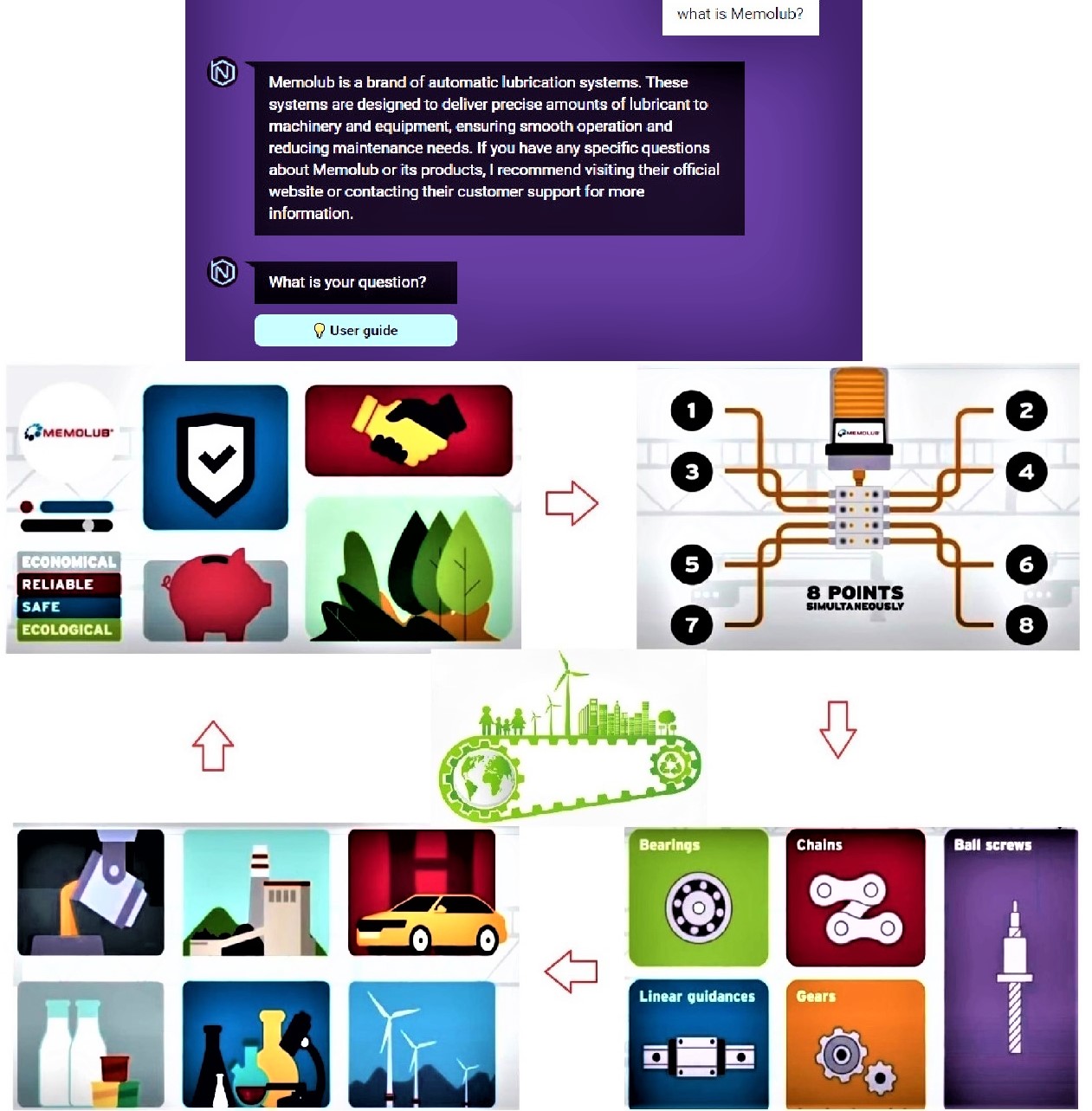
We do hope you apply the appropriate and successful automatic lubrication system for your company?
REFERENCE SOURCES
- MANUAL OR AUTOMATIC LUBRICATION? HOW TO DECIDE: https://www.machinerylubrication.com/Read/29285/manual-automatic-lubrication
- THE TREND OF CHANGING FROM MANUAL TO AUTOMATIC LUBRICATION: ttps://hopviet.com.vn/2020/02/vi-sao-chuyen-doi-tu-boi-tron-may-moc-thu-cong-sang-tu-dong-dang-la-xu-huong/
- AUTOMATIC LUBRICATION SUCESSFUL APPLICATION CASE STUDY: https://hopviet.com.vn/category/application/?lang=en
- https://www.mobil.com/en/industrial/Lubricant-Expertise/Resources/choose-grease-electric-motor-bearings
- https://www.machinerylubrication.com/Read/31026/high-speed-grease
- https://www.machinerylubrication.com/Read/537/predict-oil-life
- https://www.mobil.com/industrial/~/media/files/global/us/industrial/tech-topics/tt-electric-motor-bearing-lubrication-guide.pdf
- http://www.skf.com/caribbean/products/bearings-units-housings/super-precision-bearings/principles/lubrication/grease-lubrication/grease-service-life-and-relubrication-intervals/index.html
- https://www.klueber.com/ecomaXL/files/Lubrication_of_rolling_bearings_tips_and_advice.pdf
- https://www.machinerylubrication.com/Read/537/predict-oil-life
- https://en.wikipedia.org/wiki/Automatic_lubrication_system
- https://www.machinerylubrication.com/

